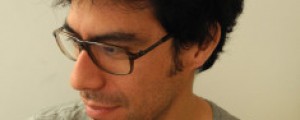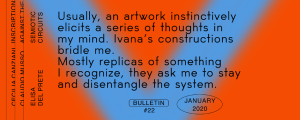The Portrait Room. Portrait#6: Peter Hutton
Peter Hutton does not like digital cameras but likes mint candies very much.
American independent filmmaker Peter Hutton was born in Detroit in 1944. He has taught at CalArts, Hampshire College, Harvard University, and currently at Bard College, where he has served as director of the Film and Electronic Arts Program since 1989. Among other exhibitions, his work has been the subject of a big retrospective at MoMA in 2008. Before becoming an artist, Hutton lived and worked on large merchant ships for a decade, which deeply affected his subtle vision. As he states, “there is a kind of culture of survival when you are out at sea, where you have to develop a kind of visual acuity to know where you are going and what’s happening.” His films convey a powerful, contemplative method of viewing the world indeed. They portray a sense of meditative timelessness, being sublimely meditative and luminously photographed. In each of them, the artist opposes a patient observation-based practice to a manipulated or staged reality.
“Figures, Landscapes & Time,” one of his biggest solo exhibition in Europe – on view through February 1st, 2014 at La Loge in Brussels – features a number of early works but also his latest film, ThreeLandscapes (2013), that premièred at the Toronto International Film Festival in September 2013. Shot in Hutton’s hometown Detroit, along the Hudson River Valley, and in the Dallol Depression in Ethiopia, the film shows three places in the world he is emotionally attached to: respectively, the place where he was born, the place where he lives, and the Ethiopian salt desert, where a peculiar landscape is worked out by patient human beings. Neverthless, Hutton never feels an anthropological need when filming: on the contrary, the figure is relatively absent in his works, that solemnly follow the tradition of landscape paintings and still photography, being composed by single shots taken from a fixed position – also an homage to Dusseldorf’s school and its tradition as declared by the author.
In the second exhibited video, At sea (2007), Hutton tells the epic story of the birth, life, and death of a container ship, dramatically showcasing the social, ecological and economic effects of such a life cycle.
Last but not least, the exhibition presents five silent portraits of cities – including Boston Fire (1979) and Landscape (for Manon) – filmed in the 70s , that capture the essence of the landscape through abstract black and white images. The old-fashioned practice of portraying the city from a window gives us a slow motion impression of time and visual elements of the urban landscape. Like an old man spying his neighborhood, Peter Hutton is a voyeur, obsessively watching the world: the wind blowing on plastic bags, the clouds passing over the World Trade Center, lonely homeless people, or someone passing by on the street… People he never dares to speak to, because he loves to keep a distance, not to ask questions, to stay apart and hold still. He sees every moving element in his frame as a potential, lifeless element of the landscape. With old sailor’s patience, he seats and waits for them to pass by. As Monet and his Cathédrales de Rouen, he is charmed by time and the way it manipulates reality.
Hutton is definitely interested in the very first phase of the filming process: observation, above all. Every sequence is the result of his passion for seating and observing, feeling the space by keeping his distance from the subject, in a silent contemplation. He uses the expressions “sketch-work,” “making records” and “taking notes” to describe the process behind his diaristic studies of a place. His films are, as he suggests, visual sketch-works.
His emotional and professional engagement with film rolls depends on their particular features, such us their organic materiality and imperfection. From the technical point of view, the red filter completely lets the light come out from the background and emerge in contrast with dark blacks. The stillness of the images and the absence of sound make the landscapes empty and primordial, able to swallow the human presence and make it completely unnecessary.
There is no gesture in his works, but contemplation: everything is basic and therefore basically striking. The choice of black and white tones contributes to a very basic, graphic image, made of big contrasts and saturation, in which the light is coming from the background, without any space left for decoration.
Peter Hutton is not interested in stories and narratives: he relies on basic language and 16 mm films for his beautiful tableaux, which remind us of those of Constable and Turner, with their great composition, contrasts and sublime emotional components. Except that, for Hutton this emotional landscape is always recorded with rational detachment. Having foundations in sculpture and painting, he perfectly knows what constitues an image and is aware of space and its understanding in art history. His works engage in a dense wonder, making us stare at his half-moving paintings with enjoyment, going deeper in the texture, looking for a longer time.
As he says, the less is more, but it has to be distinctive.
Useful links I went through to get ready for this article:
Peter Hutton’s films on Mubi.com http://mubi.com/cast_members/82566
The announcement of his retrospective at Moma on e-flux http://www.e-flux.com/announcements/peter-hutton/
Peter Hutton’s guided tour of his exhibition at La Loge.
Friday 11/29/2013, 8 °C, La Loge, Brussels
by Michela Alessandrini
in The Portrait Room
Jan 7, 2014























